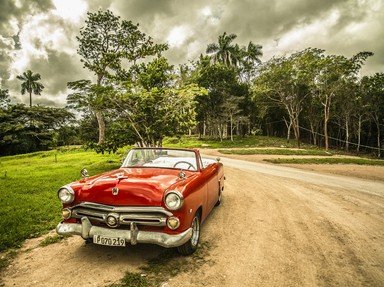Quiz Answer Key and Fun Facts
1. Which now defunct auto company was responsible for marketing the first Wankel-powered car?
2. What was the name of the first Chevrolet family van?
3. Why were some Chrysler Imperial models named "Le Baron"?
4. Where is the Tatra automobile made?
5. What was the last popularly-priced Triumph sports car to be imported into the United States?
6. What were the main ingredients of the first catalytic converters?
7. When did the Ford Crown Victoria, successor to the popular LTD model, originally have its start?
8. What was the line-up for the now defunct Rootes Group?
9. Lotus is famous for many models in this country. Perhaps its most famous model is the original Elan roadster of the 60s. What was the model designation for the hardtop version of this model.
10. What was the name of FIAT's tuning house during the 60s?
11. Which company is credited with the first "modern" transmission?
12. Who could "easily" be credited with actually inventing what could technically be called an "automobile" (aka a "horseless carriage")?
13. What car was the Dodge Charger originally based on?
14. What company first made Jeeps?
15. Which venerable racing and tuning company from Great Britain souped up the Chevy Vega in the early 70s?
Source: Author
Photoscribe
This quiz was reviewed by FunTrivia editor
gtho4 before going online.
Any errors found in FunTrivia content are routinely corrected through our feedback system.

